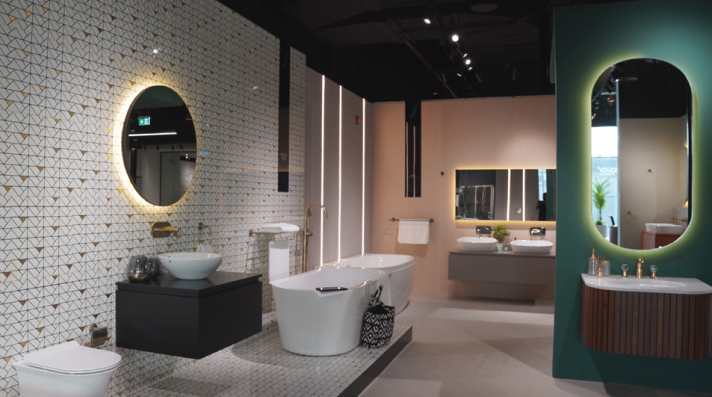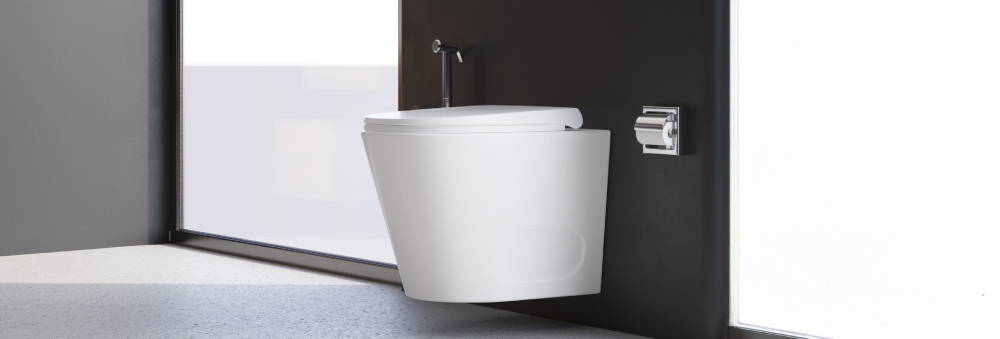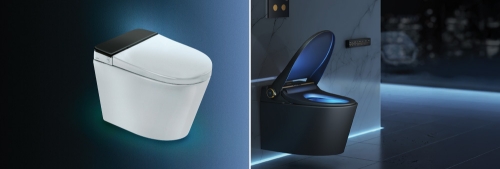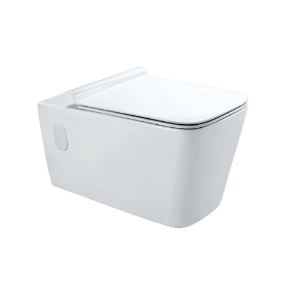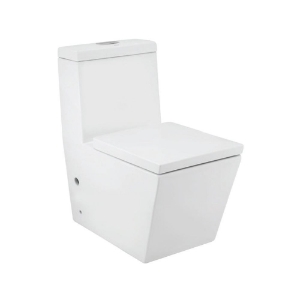Using a WC toilet (Western-style toilet) is pretty simple once you learn the procedures and sanitary choices that accompany it. Those new to a WC toilet or who would like a brief guide for children or older people will find it easy to follow. It is written to help the reader as a guide. For visitors and residents, WC and squat toilets are standard in the UAE.
What Does WC Stand For?
WC stands for "Water Closet," a flush toilet used in private and public restrooms. In modern bathrooms, a WC toilet includes a toilet seat, flush tank, toilet cistern, and a hand shattaf for cleaning in many UAE homes.
Also Read: Rimless Toilet vs. Rimmed Toilets: Difference, Benefits & More
How To Use a WC Toilet: Step-by-Step Guide
Step 1: Approach the Toilet Properly
Stand directly before the bowl and check if the seat is clean. If it isn't, you can clean it with a tissue or disinfectant. Some may choose to put a layer of tissue on the seat, irrespective of its cleanliness, for sanitary reasons.
Step 2: Sitting on the Toilet
If the seat is up, lower it. Then, sit directly on the toilet seat, flat on the ground. Make sure you are balanced and in the right position to maintain balance, which is also sanitary.
Step 3: Using the Toilet
Once you are sitting and comfortable, relax and let go. Leaning towards the front, especially for bowel movements, is advisable, as it encourages the ease of bowel movements while minimising the strain of using the toilet.
Step 4: Clean Up
In the UAE, cleaning yourself using a hand spray shattaf (bidet spray) is common. If you prefer tissue paper, make sure to dispose of it properly. For best hygiene, use both.
Step 5: Flush the Toilet
Once done, press the button or lever on the wc flush tank or toilet cistern to flush waste. It is also good practice to close the lid before flushing, which avoids the spread of germs.
Step 6: Wash Your Hands
Always wash your hands with soap and water after using the toilet. This step is important in maintaining personal hygiene.
Also Read: A Guide To Choose Right Water Hose for Hand Shattaf & Hand Shower
Know the details of Jaquar's bath & light range by downloading respective catalogues.
Download Catalogue
Safety and Hygiene Tips for Using a Western Commode Toilet
1. Consider using a tissue on the toilet seat
If you worry about germs, use tissue paper on the seat before sitting down. This is especially handy in public restrooms.
2. Close the Lid Before Flushing
Always close the toilet lid before you flush to prevent spray or germs from spreading.
3. Support for the Elderly or Disabled
People with mobility issues and the elderly can use grab bars for support or raised toilet seats for safe usage.
4. Regular Cleaning
Keeping the western commode and the toilet seat clean is essential. Use mild disinfectants to clean surfaces frequently.
Also Read: Bathroom Design Ideas: 10 Best Modern Designs You will Definitely Love!
Using a Western commode will become that simple once you learn the procedure. Using the correct stance/position, paying attention to hygiene practices, and knowing the features, including the flush tank or hand shattaf/shattaf at the toilet, will all enhance your comfort and cleanliness. Using a WC toilet when you're at home or in a public area in the UAE, hygiene and safety will always matter. For the ultimate comfort in your bathroom experiences, consider the ingenious Western toilet seats from Jaquar, a well-known bathroom solutions manufacturer.
FAQs:
Q. What is the proper way to sit on a Western toilet?
A. Sit on the toilet seat with your feet flat on the ground - keeping feet flat on the ground is an important position. Leaning slightly forward with hands on knees may help during the bowel movement.
Q. Should I close the lid before flushing so bacteria and germs do not spray out of the toilet?
A. Yes, it is hygienic to close the lid before flushing to ensure as little bacteria and germs as possible are created, as some can come out of the toilet cistern when you flush.
Q. Why is leaning forward on a Western seat recommended?
A. Leaning forward is argued to improve the efficiency of bowel movements by aligning your body in a more natural position.
Q. Is it safe to sit on tissue for hygiene, such as to cover a toilet seat, if I can't choose other options (e.g., squatting, using proper hygiene, etc.)?
A. Yes, many people use tissue on the seat as a matter of personal hygiene before going to the toilet or in public places where they don't have their own hygiene options.
Q. How could elderly or disabled people sit safely on a WC toilet (toilet)?
A. They can access it with grab bars, use raised seated toilets, or get help from caregivers to support their safe and well-being with their toilet habits.
Explore Our Bathroom Categories:

